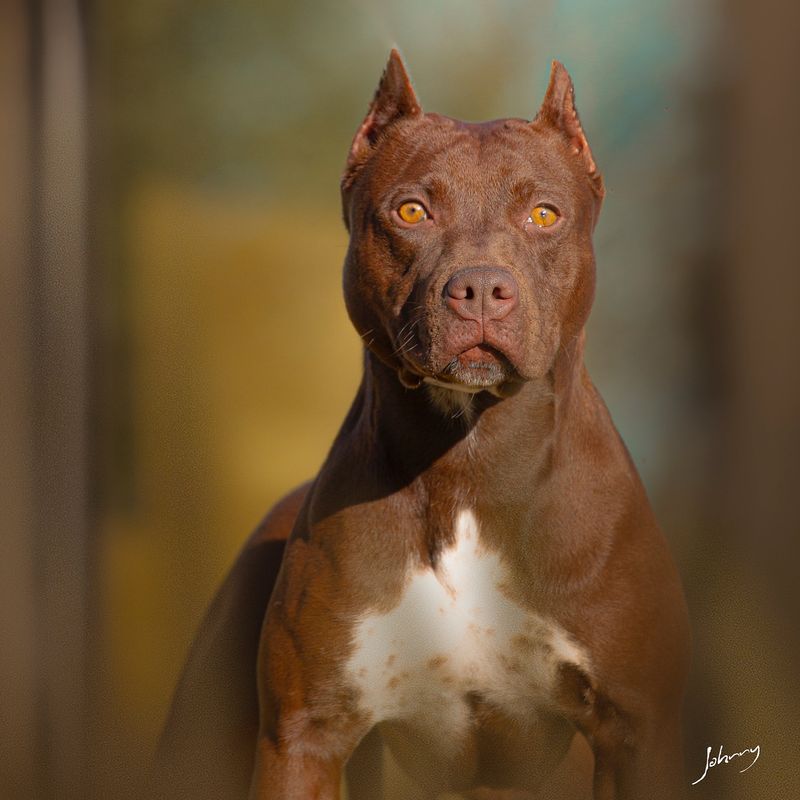Rottweiler VS Pit Bull: 10 Surprising Differences That Set Them Apart

In the delightful world of canines, few breeds prompt as much debate and fascination as the Rottweiler and the Pit Bull. While both are known for their strength and loyalty, these two breeds are as different as chalk and cheese when it comes to characteristics, behaviors, and histories.
Whether you’re a dog enthusiast or a curious observer, exploring the surprising differences between these breeds offers a captivating journey into the unique traits that set them apart. From their distinct physical features to their varied temperaments, each breed has its own story to tell.
1. Physical Appearance

When it comes to physical appearance, Rottweilers and Pit Bulls are easily distinguishable at first glance. The Rottweiler, with its robust and powerful build, stands taller and has a more imposing presence than the average
Pit Bull. Typically, a Rottweiler’s coat is black with tan markings, providing a striking contrast that highlights its form. On the other hand, Pit Bulls are known for their muscular, lean bodies that exude athleticism. They come in a wide variety of colors and patterns, making each one unique in its aesthetic appeal.
The differences do not stop at size and color. Rottweilers sport a docked tail, a historical trait from their past as cart-pulling dogs, which adds to their dignified appearance. Their eyes are typically almond-shaped, giving them a calm yet alert expression.
Conversely, Pit Bulls, with their shorter tails and round eyes, often present a more approachable look. This physical diversity is not just skin deep; it reflects their different historical roles and the evolution of their respective breeds.
In essence, while both breeds share a common ancestry of being hardworking dogs, their distinct appearances have evolved to suit their specific functions over time.
2. Temperament and Behavior

Temperament is where the Rottweiler and Pit Bull truly begin to show their individual personalities. Rottweilers are often perceived as reserved and slightly aloof, especially around strangers.
Their calm, confident demeanor makes them excellent guard dogs, loyal to their family but suspicious of outsiders. This cautious nature is complemented by their intelligence and ability to assess situations before reacting.
Pit Bulls, on the other hand, are characterized by their exuberant and playful nature. They are known for their love of people, often approaching strangers with enthusiasm and friendliness. This outgoing temperament makes them less suitable as guard dogs but more as family companions who thrive on social interaction. Their eagerness to please and energetic playfulness are hallmarks of the breed.
Despite these differences, both breeds require proper training and socialization to harness their natural instincts positively. Understanding their distinct temperaments helps owners provide the right environment for each dog to thrive, ensuring a harmonious relationship with their human companions.
3. Historical Background

The historical backgrounds of the Rottweiler and Pit Bull are as diverse as their temperaments. Rottweilers trace their lineage back to ancient Rome, where they were bred as herding dogs for cattle.
These dogs accompanied Roman legions on their conquests, helping to guard and move livestock. Over time, they became indispensable to butchers in the German town of Rottweil, known for their strength and herding abilities. This rich history is reflected in their robust physique and working dog mentality.
Pit Bulls, however, originated in 19th-century England, where they were bred for bull-baiting and later as family companions. Their ancestors were a mix of bulldog and terrier breeds, combining agility with strength. As these cruel sports were banned, the Pit Bull’s role shifted to that of a beloved pet and working dog, particularly in the United States. Their history of resilience and determination is evident in their tenacious spirit and adaptability.
Each breed’s historical journey has shaped its modern-day traits, from the Rottweiler’s protective instincts to the Pit Bull’s friendly demeanor. This historical context provides valuable insight into their current roles and behaviors in our lives today.
4. Training and Intelligence

When it comes to training, both Rottweilers and Pit Bulls are intelligent breeds, but they approach learning with different attitudes. Rottweilers are known for their ability to learn commands quickly and their eagerness to work. This breed excels in obedience training and thrives on structure and clear guidance from their handlers. Their intelligence combined with a strong work ethic makes them excel in various canine sports and working roles.
Pit Bulls, while equally intelligent, often exhibit a more playful approach to training. Their enthusiasm can sometimes come across as stubbornness, but with positive reinforcement and patience, they can learn a wide range of commands and tricks. They enjoy interactive training sessions and excel in agility and other dynamic activities.
Understanding these differences in approach helps tailor training methods to suit each breed’s strengths. For Rottweilers, consistent routines and challenging tasks keep them engaged, while Pit Bulls benefit from playful and varied training sessions that cater to their energetic nature. Both breeds, with the right training, can achieve remarkable accomplishments.
5. Socialization Needs

Socialization plays a crucial role in the development of both Rottweilers and Pit Bulls, but each breed has its own unique needs. Rottweilers, with their natural guarding instincts, require early and consistent socialization to ensure they are well-adjusted and can distinguish between friend and foe.
Their calm demeanor can sometimes be mistaken for aloofness, but with proper socialization, they become well-rounded companions.
Pit Bulls, conversely, are naturally social and thrive on interaction with both humans and other animals. Their outgoing nature means they generally adapt well to various social settings, from dog parks to family gatherings. However, like any breed, early socialization is key to preventing behavioral issues and ensuring they grow into friendly, confident adults.
By understanding their differing socialization needs, owners can provide tailored experiences that help each breed thrive within their families and communities. This understanding fosters positive interactions and strengthens the bond between dog and owner.
6. Health and Lifespan

While both Rottweilers and Pit Bulls are generally healthy breeds, they each have specific health concerns that potential owners should be aware of. Rottweilers, due to their larger size, are prone to joint issues such as hip dysplasia. Regular vet check-ups and maintaining a healthy weight through diet and exercise are essential in managing these potential problems.
Pit Bulls, with their robust physique, tend to have fewer breed-specific health issues but can be prone to skin allergies and thyroid problems.
Regular grooming and monitoring for allergic reactions help keep them in peak condition. Both breeds benefit from a nutritious diet, regular exercise, and preventive veterinary care to ensure a long and healthy life.
In terms of lifespan, Pit Bulls generally outlive Rottweilers, with an average lifespan of 12 to 14 years compared to the Rottweiler’s 8 to 10 years. Understanding these health considerations allows owners to provide the best care and a happy life for their furry companions.
7. Popularity and Public Perception

The popularity and public perception of Rottweilers and Pit Bulls vary widely, influenced by media portrayals and societal attitudes. Rottweilers, often seen as the quintessential guard dog, have earned a reputation for loyalty and protection. This image, while sometimes leading to misconceptions about their temperament, contributes to their popularity among families seeking security and companionship.
Pit Bulls, on the other hand, have faced a more challenging public perception. Often misunderstood due to their history and media portrayals, they are sometimes unjustly characterized as aggressive. Despite this, many owners and advocates work tirelessly to change perceptions by showcasing their loving and loyal nature. Pit Bulls excel in roles as family pets and therapy dogs, breaking down stereotypes one wagging tail at a time.
Both breeds, through positive representation and responsible ownership, continue to shape their image in the public eye, proving that with love and understanding, they can be wonderful companions.
8. Exercise Requirements

Exercise is a fundamental part of life for both Rottweilers and Pit Bulls, but their specific requirements can differ. Rottweilers, with their working dog background, thrive on structured activities that challenge their physical and mental capabilities. Agility training, long walks, and obedience drills are excellent ways to keep a Rottweiler fit and engaged.
Pit Bulls, with their high energy levels, require ample time to burn off steam. They excel in dynamic activities such as fetch, running, and play sessions with other dogs. Their playful nature means they enjoy interactive games that stimulate both body and mind. Ensuring they get enough exercise helps mitigate potential behavioral issues and keeps them healthy.
By catering to their distinct exercise needs, owners can ensure a balanced and fulfilling lifestyle for their dogs, promoting overall well-being and happiness.
9. Grooming and Maintenance

Grooming and maintenance are essential aspects of caring for both Rottweilers and Pit Bulls, although their needs differ slightly. Rottweilers, with their thick double coat, require regular brushing to minimize shedding and keep their coat healthy. This routine also provides an opportunity to check for skin issues or parasites.
Pit Bulls have a short, smooth coat that requires less maintenance but benefits from regular grooming to keep their skin healthy and shiny. Their grooming sessions often include nail trimming, ear cleaning, and checking for any skin irritations or allergies. Both breeds appreciate the bonding time that grooming provides, strengthening the connection with their owners.
Understanding the grooming needs of each breed ensures they look and feel their best, contributing to their overall health and happiness.
10. Breed-Specific Legislation

Breed-specific legislation (BSL) is a controversial topic that affects both Rottweilers and Pit Bulls, often limiting ownership and imposing restrictions based on perceived risk. These laws are designed to prevent dog attacks but are criticized for unfairly targeting certain breeds without addressing the root causes of aggression.
Rottweilers, while less frequently targeted by BSL than Pit Bulls, can still face restrictions in certain areas. Their reputation as guard dogs sometimes leads to misconceptions about their temperament. Pit Bulls, more commonly affected by BSL, are often victims of stereotype-driven legislation. Advocates argue for a focus on responsible ownership and education rather than blanket bans.
Understanding the implications of BSL helps potential owners make informed decisions and advocate for fair treatment of these breeds. The debate continues, highlighting the need for balanced, evidence-based approaches to canine legislation.
